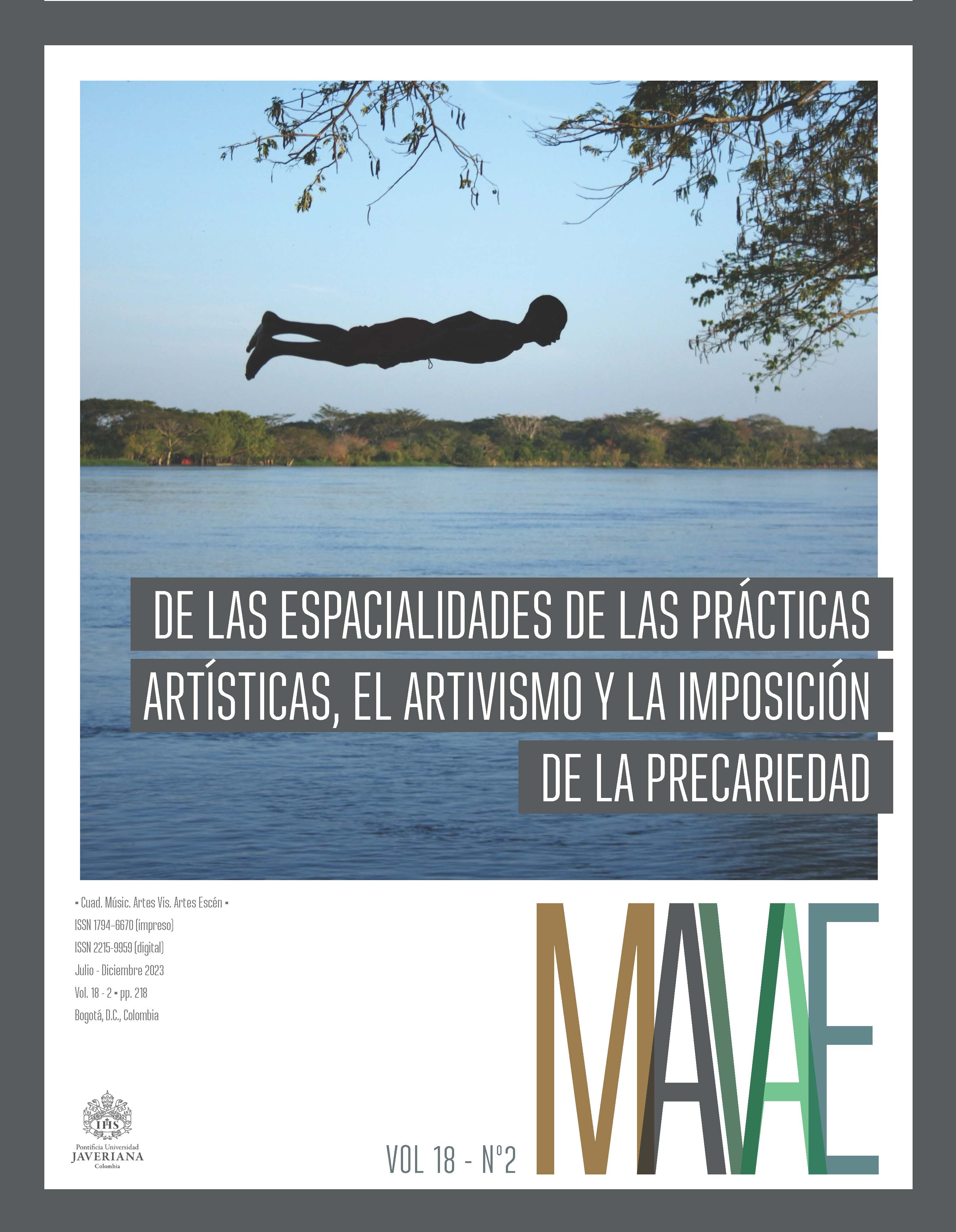Ñamiajapú dajãrãsa: The Work as a Promise of Reunion
##plugins.themes.bootstrap3.article.details##
Ñamiajapú dajãrãsa is a collaborative and interdisciplinary artistic creation process that emerged in 2018, addressing the phenomenon of Indigenous youth migration in the department of Vaupés in the Colombian Amazon. Through an exercise of emotional and reflective memory that combines writing with audiovisual archives, this article presents contextual and methodological aspects of the creative process, as well as the questions and emotions generated throughout four years of work. As a result, the reader is brought closer to an initiative whose main interest is to facilitate encounters and relationships among Indigenous and non-Indigenous creators from Mitú, Villavicencio, and Bogotá in a shared territory where the confrontation and dialogue between cultural and generational narratives, languages, and knowledge constitute the creative material and give meaning to action through art.
process art, intercultural dialogue, art and territory, Indigenous youth, Colombian Amazonarte processual, diálogo intercultural, arte e território, juventude indígena, Amazônia colombianaarte procesual, diálogo intercultural, arte y territorio, juventud indígena, Amazonía colombiana
Grubits, Sonia, Heloisa Bruna Grubits Freire y José Angel Vera Noriega. 2011. “Suicídios de jovens Guarani/Kaiowá de Mato Grosso do Sul, Brasil”. Psicologia: Ciência e Profissão 31, n.º 3, 504-517. doi:10.1590/S1414-98932011000300006
ICBF (Instituto Colombiano del Bienestar Familiar). 2018. Una aproximación al suicidio de niños, niñas y adolescentes en Colombia. Bogotá: ICBF. https://www.icbf.gov.co/sites/default/files/boletin_suicidio_25.07.2018.pdf
Korff, Jens. 2022. “Aboriginal suicide rates”. https://www.creativespirits.info/aboriginalculture/people/aboriginal-suicide-rates
“La chagra: Fuente de alimento, sistema integral y fundamento de vida”. 2019. Gaia Amazonas, 14 de enero. https://www.gaiaamazonas.org/
noticias/2019-01-14_la-chagra-fuente-de-alimento-sistema-integraly-fundamento-de-vida/
OZCIMI (Organización Zona Central Indígena de Mitú). 2008. Plan Integral de Vida Indígena. Mitú: OZCIMI. https://repositoriocdim.esap.edu.co/bitstream/handle/123456789/235/12509-1.pdf
Pollock, Nathaniel J., Kiyuri Naicker, Alex Loro, Shree Mulay y Ian Colman.2018. “Global Incidence of Suicide Among Indigenous Peoples: A Systematic Review”. BMC Med 16, n.º 1:145. https://doi.org/10.1186/s12916-018-1115-6
Salamanca Uribe, Juana. 2017. “Mitú: Bonanzas y maldiciones”. Credencial Historia, n.º 229. https://www.banrepcultural.org/biblioteca-virtual/
credencial-historia/numero-229/mitu-bonanzas-y-maldiciones
Schneider, Rebecca y Gabriele Cody. 2002. “General Introduction”. En Re: Direction: A Theoretical and Practical Guide, 1-11 Londres: Routledge.
Talaga, Tanya. 2018 “Colonialism Is Life and Death”. https://www.youtube.com/watch?v=pLYZ8Gaz0uc
Vivas, Julián. 2019. “El ‘error’ del DANE que borró del mapa a 1,3millones de afros”. El Tiempo, 25 de noviembre. https://www.eltiempo.com/colombia/otras-ciudades/el-error-del-dane-queborro-del-mapa-a-1-3-millones-de-afros-436936

This work is licensed under a Creative Commons Attribution 4.0 International License.


